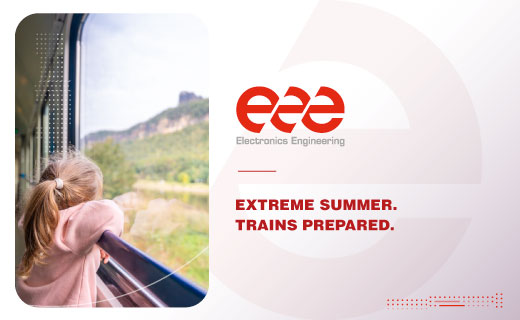When temperatures rise above 40 °C, keeping transportation systems running —safely, reliably, and comfortably— becomes a real challenge. But modern trains are up to the task.
Thanks to a combination of electronic engineering, smart design, and preventive maintenance, railways can continue operating even under extreme thermal conditions. How do they do it?
Adaptive Ventilation and Climate Control Systems
Passenger comfort is essential —but it’s not the only concern. In addition to cooling the cabin, modern trains regulate temperature in sensitive technical areas such as equipment rooms, converters, or driver cabs. Some systems even adjust ventilation automatically based on thermal load and real-time occupancy.
Extreme summer and trains: Efficient Energy Management
In high heat, power consumption spikes. To prevent overloads, today’s trains include energy management systems that balance demand intelligently, optimizing the use of batteries, converters, and auxiliary sources. This not only improves efficiency but also protects equipment from thermal failures.
Fire Prevention and Detection
Extreme heat increases the risk of fire due to overheated components or sparks in technical zones. That’s why trains integrate SIL2-certified early detection and automatic extinguishing systems, especially in critical areas such as electrical cabinets and undercarriage components.
Heat-Resistant Materials and Electronics
Electronic components, insulators, sensors, and wiring are designed to withstand wide thermal ranges without degradation, ensuring full functionality even during extended heatwaves.
Summer puts railways to the test —but thanks to increasingly robust and specialized technology, trains continue doing their job: connecting people and places, no matter the temperature outside.
At Triple E, we develop and certify critical systems that help trains operate safely and reliably all summer long. Because safety doesn’t take a vacation.










